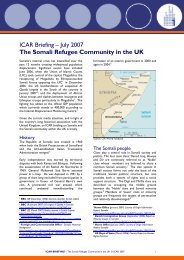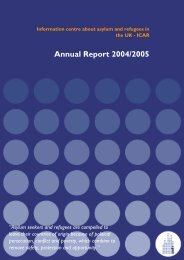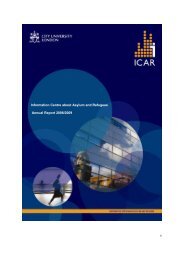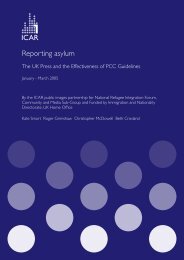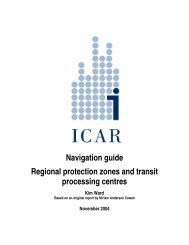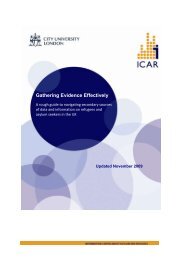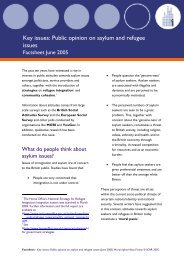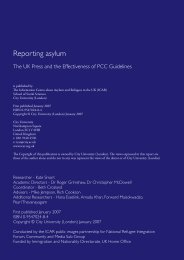Uncovered: assessing media and communications needs ... - ICAR
Uncovered: assessing media and communications needs ... - ICAR
Uncovered: assessing media and communications needs ... - ICAR
- No tags were found...
You also want an ePaper? Increase the reach of your titles
YUMPU automatically turns print PDFs into web optimized ePapers that Google loves.
Local infrastructure organisations <strong>and</strong> networks should be consulted when drawing up trainingproposals. There is a sense that training opportunities have been quite disparate <strong>and</strong> r<strong>and</strong>om, <strong>and</strong> amore joined-up approach should be encouraged. This would avoid duplication <strong>and</strong> help to direct helpwhere it is most needed.3.19 Targets of influenceTargets or identifi ed stakeholders for <strong>communications</strong> <strong>and</strong> <strong>media</strong> work do not differ greatly amongstthe different groups surveyed, <strong>and</strong> interestingly internal <strong>communications</strong> are seen as equally importantas external <strong>communications</strong>, as illustrated by the high proportion choosing ‘your own members’ astargets.Internal <strong>communications</strong> do not however appear to be a priority training area (see 3.20), suggestingthat organisations feel more competent in this area.External communication <strong>needs</strong> appear to be broad <strong>and</strong> this should be refl ected in the focus of thetraining. A high proportion of organisations seek to infl uence newspaper journalists <strong>and</strong> readers,especially for refugee <strong>and</strong> migrant worker <strong>and</strong> faith groups, perhaps due to the perceived negativeportrayal of these groups in the print <strong>media</strong>.“Where there are issues around you as an individual or group or sector that can be interpreted indifferent ways it is very important to be able to communicate through the web or the <strong>media</strong>” –(Regional Development Agency Manager)Other targets cited include funders, mentioned by eight respondents, <strong>and</strong> the general public, quotedby fi ve. One added that they preferred to infl uence the public by experience rather than throughthe <strong>media</strong>. Others stated ‘infl uential people’, policymakers, volunteers <strong>and</strong> local service users. Tworespondents commented that they wanted to inform, not infl uence.Fig 11<strong>Uncovered</strong>: <strong>assessing</strong> <strong>media</strong> <strong>and</strong> <strong>communications</strong> <strong>needs</strong> <strong>and</strong> capacity of marginalised communities31







